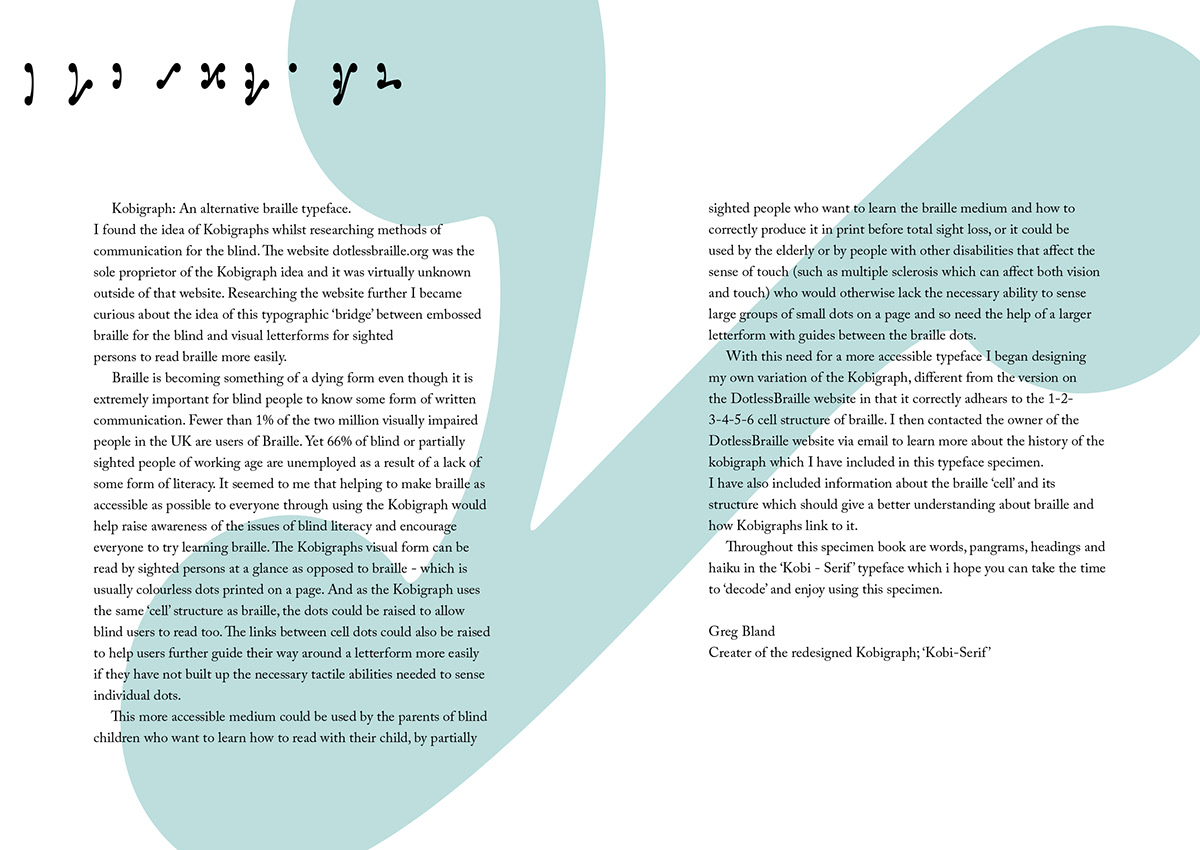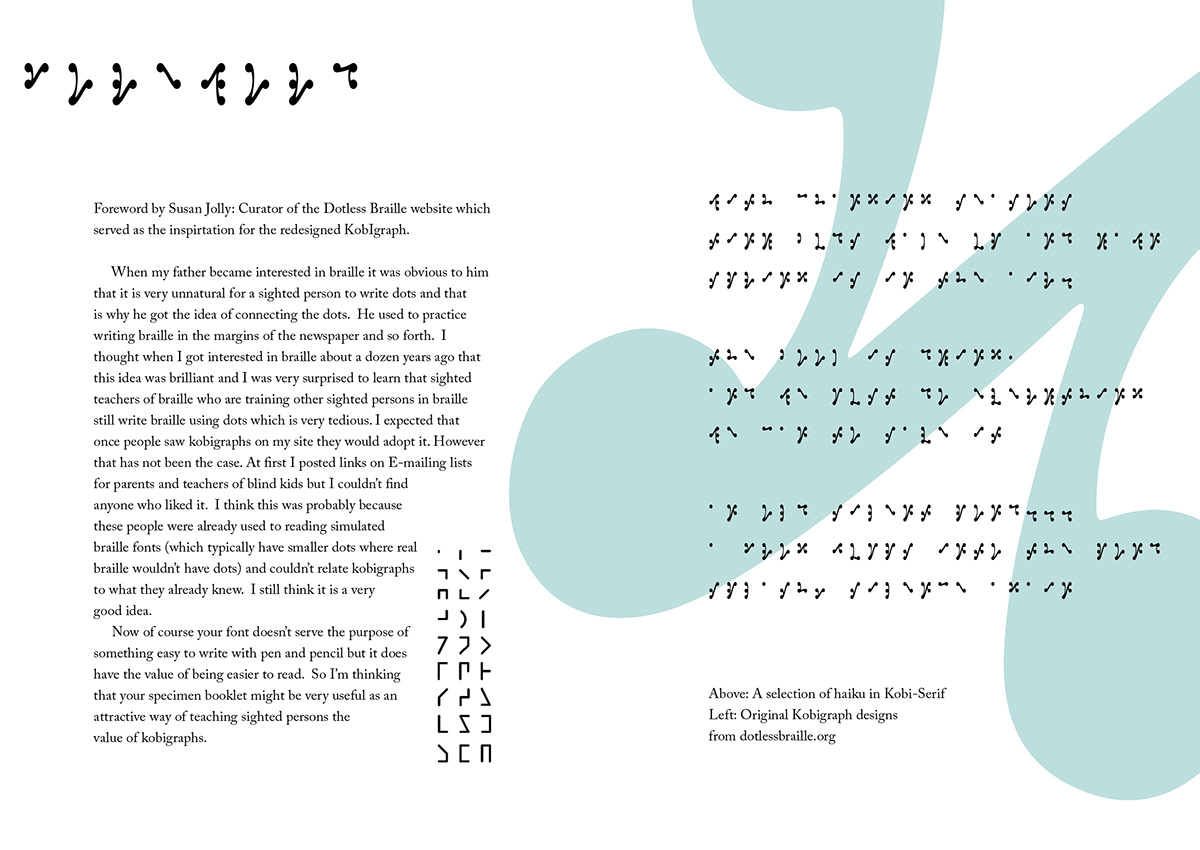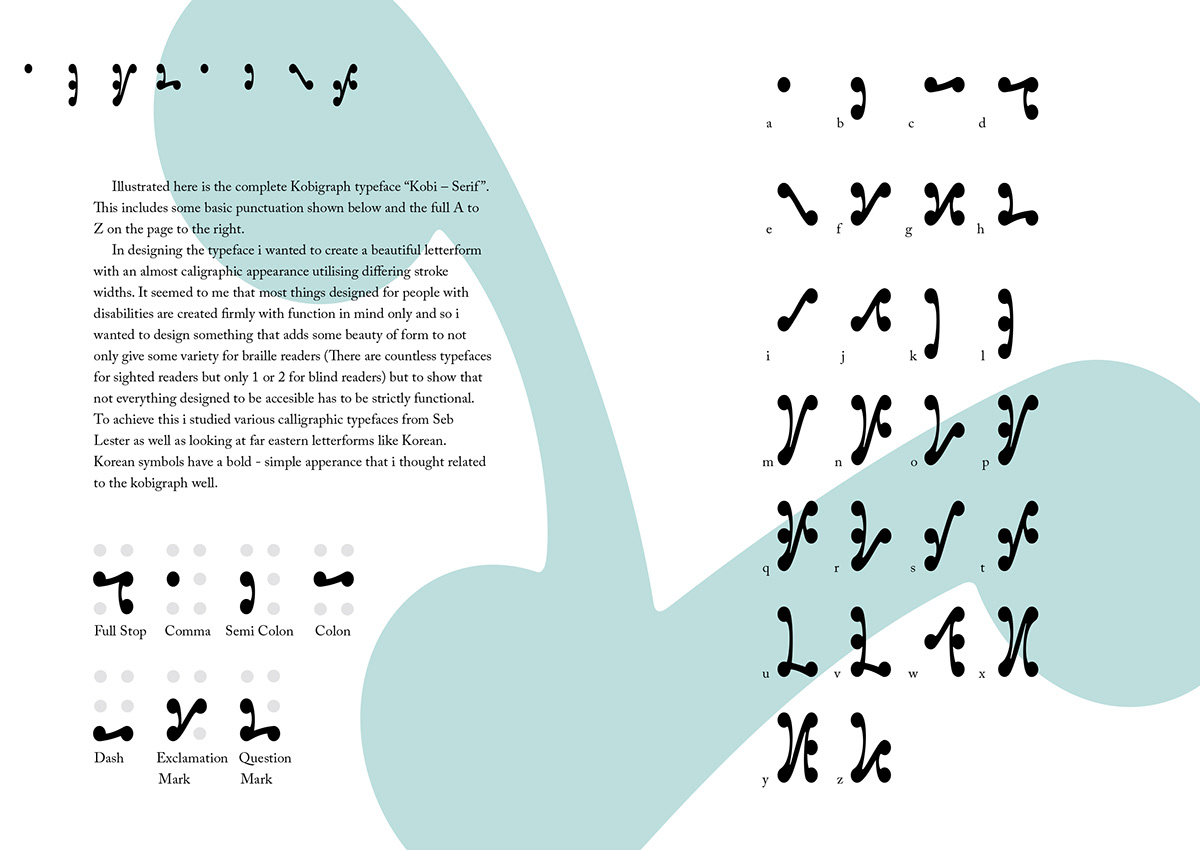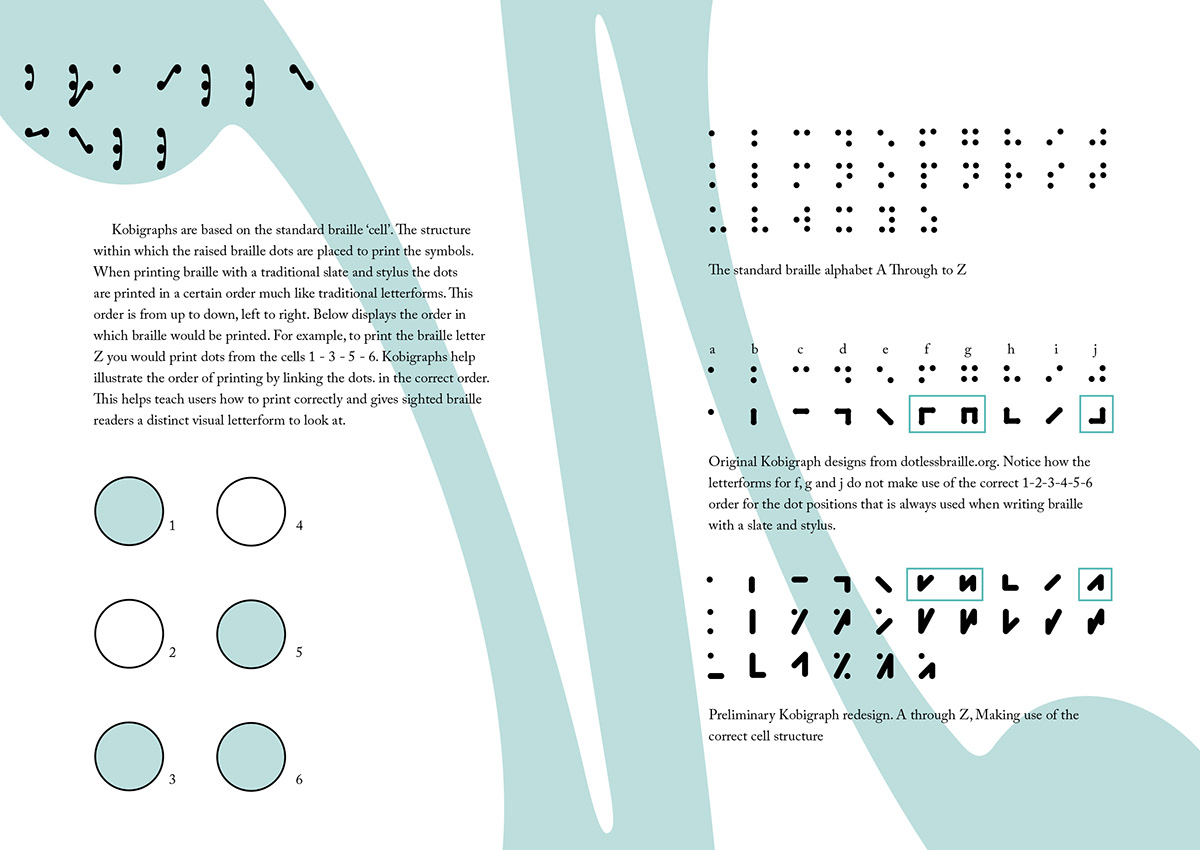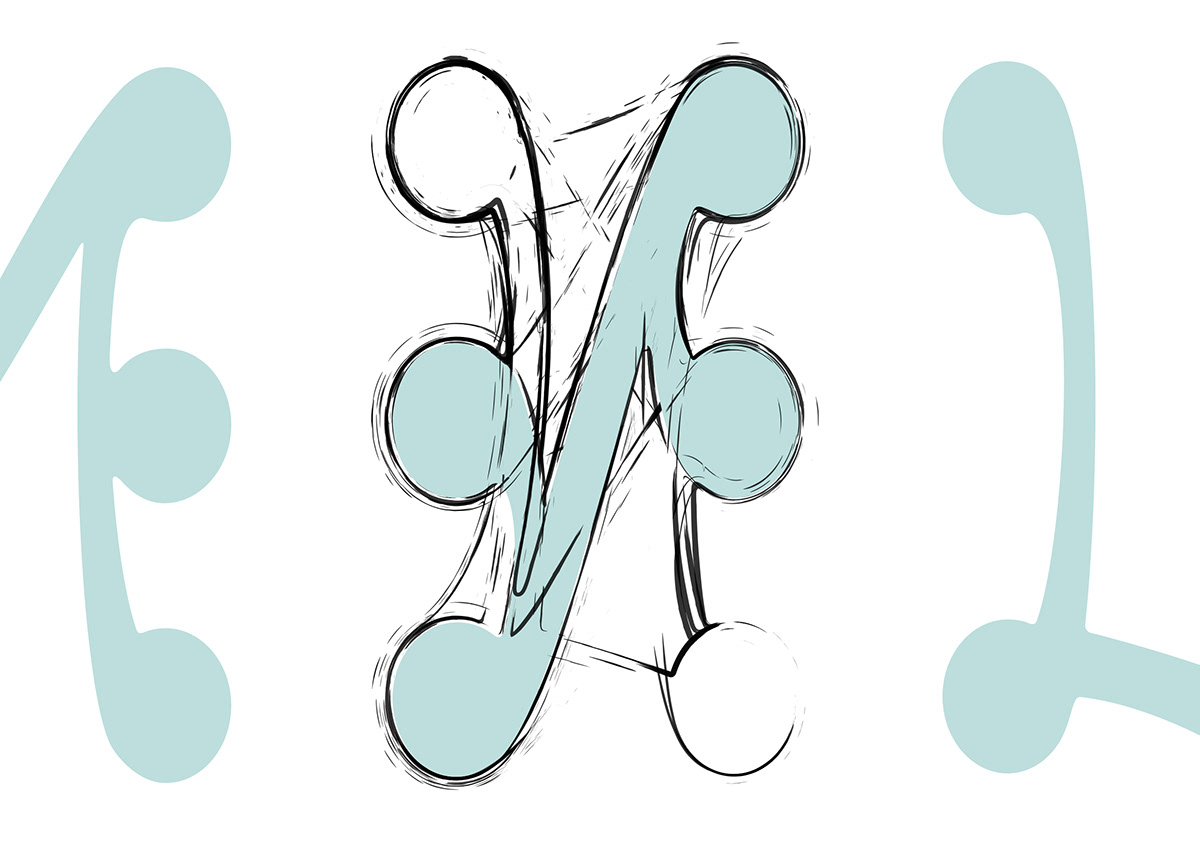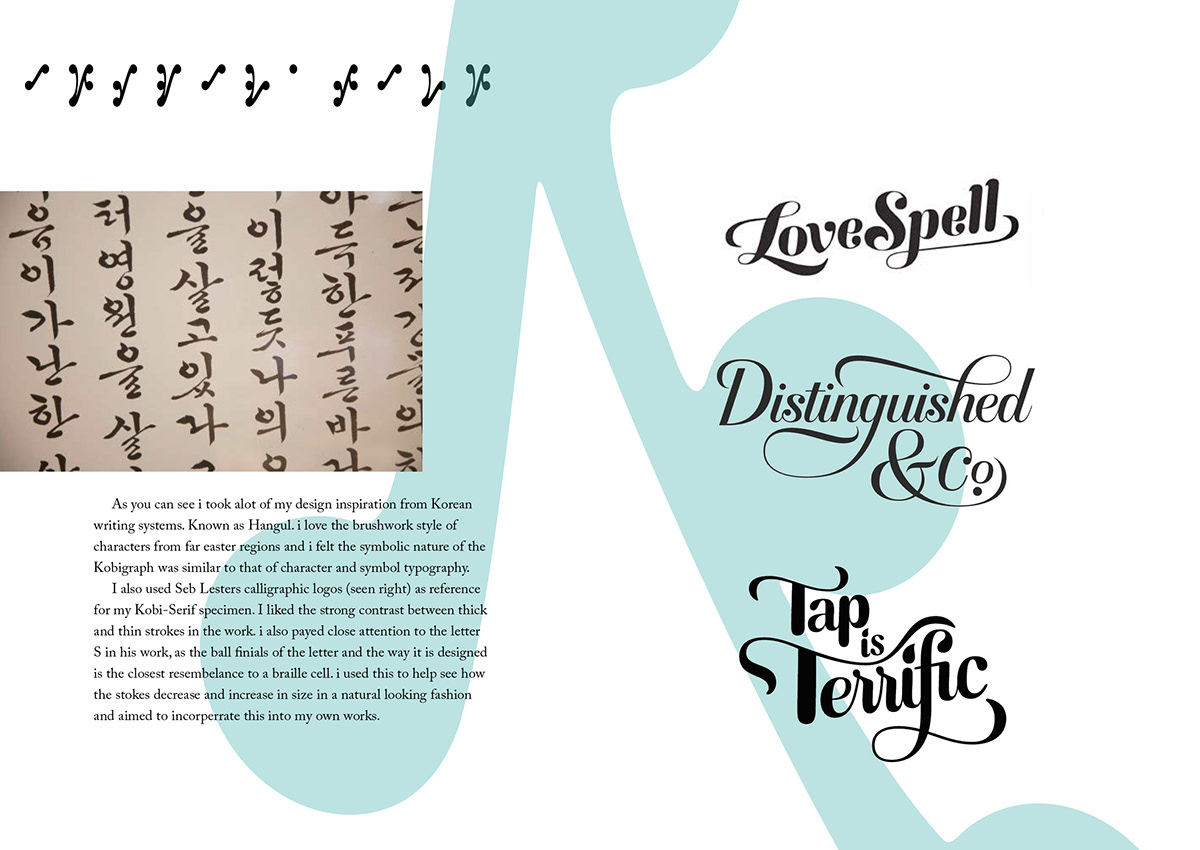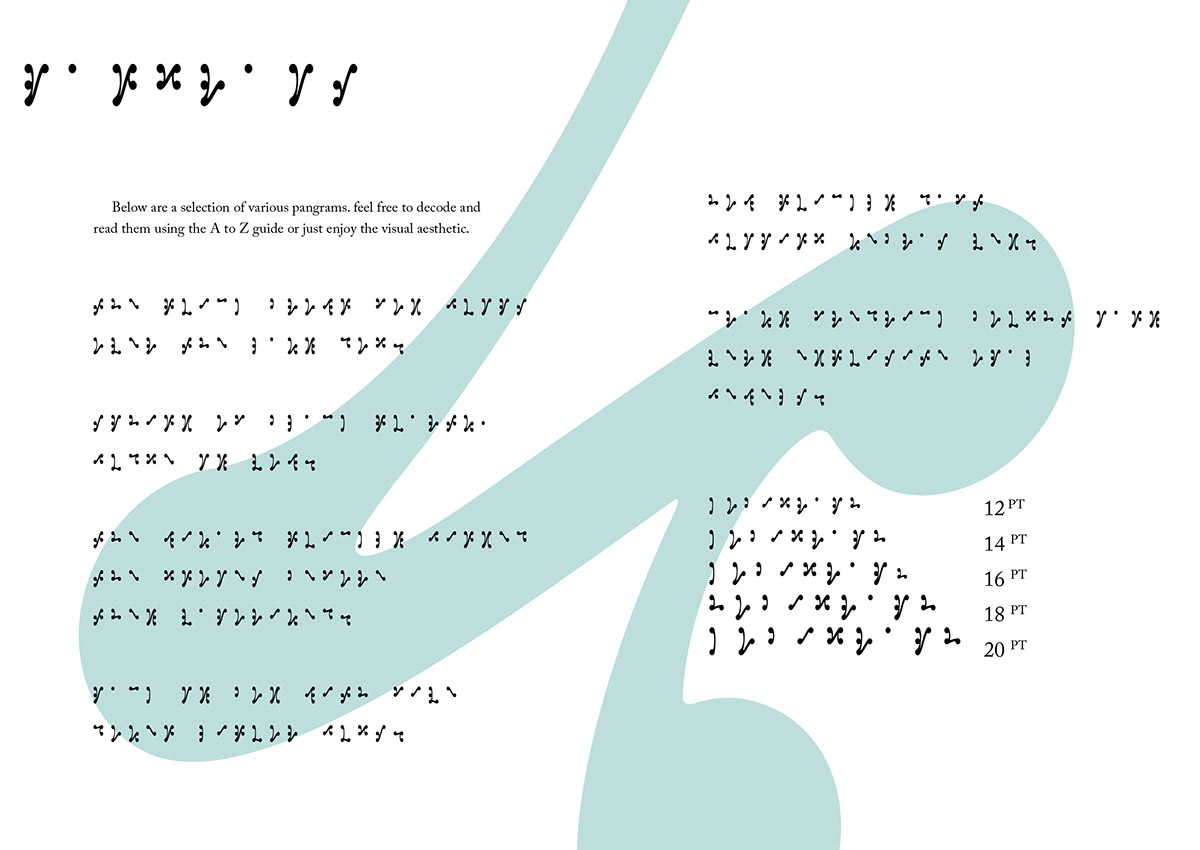Kobigraph: An alternative braille typeface.
I found the idea of Kobigraphs whilst researching methods of communication for the blind. The website dotlessbraille.org was the sole proprietor of the Kobigraph idea and it was virtually unknown outside of that website. Researching the website further I became curious about the idea of this typographic ‘bridge’ between embossed braille for the blind and visual letterforms for sighted
persons to read braille more easily.
Braille is becoming something of a dying form even though it is extremely important for blind people to know some form of written communication. Fewer than 1% of the two million visually impaired people in the UK are users of Braille. Yet 66% of blind or partially sighted people of working age are unemployed as a result of a lack of some form of literacy. It seemed to me that helping to make braille as accessible as possible to everyone through using the Kobigraph would help raise awareness of the issues of blind literacy and encourage everyone to try learning braille. The Kobigraphs visual form can be read by sighted persons at a glance as opposed to braille - which is usually colourless dots printed on a page. And as the Kobigraph uses the same ‘cell’ structure as braille, the dots could be raised to allow blind users to read too. The links between cell dots could also be raised to help users further guide their way around a letterform more easily if they have not built up the necessary tactile abilities needed to sense individual dots.
This more accessible medium could be used by the parents of blind children who want to learn how to read with their child, by partially sighted people who want to learn the braille medium and how to correctly produce it in print before total sight loss, or it could be used by the elderly or by people with other disabilities that affect the sense of touch (such as multiple sclerosis which can affect both vision and touch) who would otherwise lack the necessary ability to sense large groups of small dots on a page and so need the help of a larger letterform with guides between the braille dots.
With this need for a more accessible typeface I began designing my own variation of the Kobigraph, different from the version on the DotlessBraille website in that it correctly adhears to the 1-2-3-4-5-6 cell structure of braille. I then contacted the owner of the DotlessBraille website via email to learn more about the history of the kobigraph which I have included in this typeface specimen.
I have also included information about the braille ‘cell’ and its structure which should give a better understanding about braille and how Kobigraphs link to it.
Throughout this specimen book are words, pangrams, headings and haiku in the ‘Kobi - Serif’ typeface which i hope you can take the time to ‘decode’ and enjoy using this specimen.

